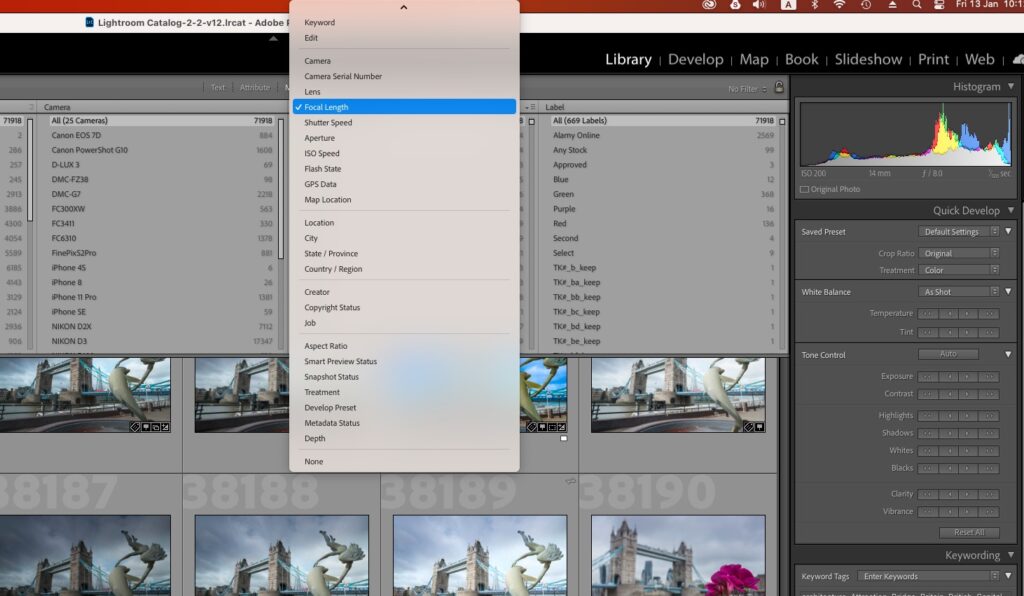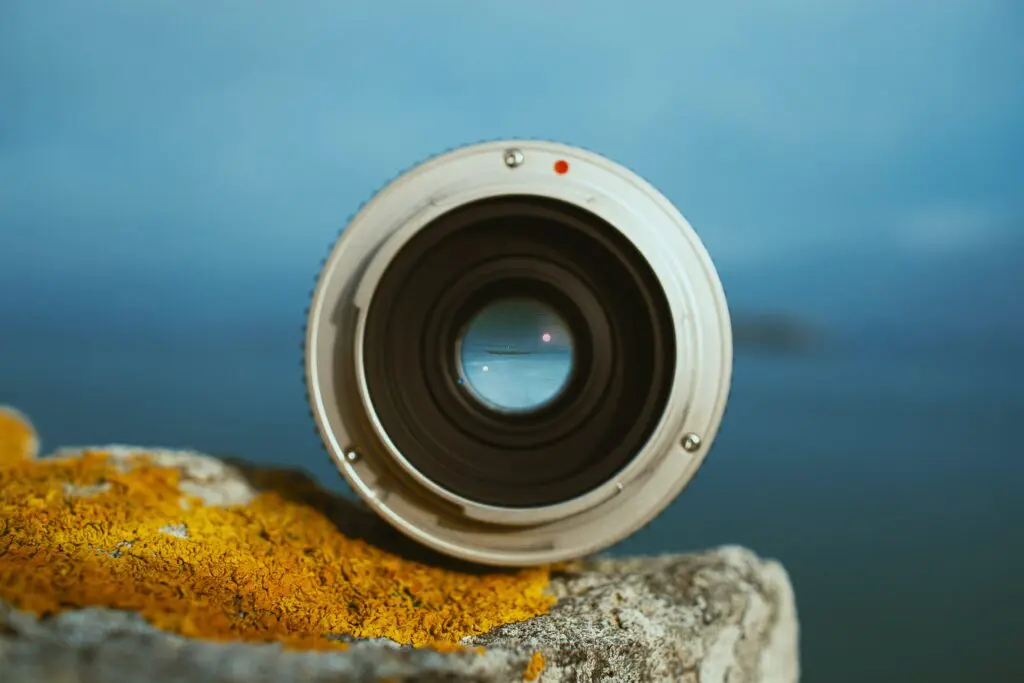Using a single focal length lens out of habit can be limiting because it forces the photographer or cinematographer to work within a specific field of view. This can make it more difficult to experiment with different perspectives and compositions, leading to a lack of variety in the resulting images or footage.
In this article, we will explain how you can discover your favorite focal length (maybe you're not aware of it!) and what you can do to expand your creative horizon and start experimenting with different focal lengths.
Analyzing Your Lens Habits
If you are an Adobe Lightroom user, there is a good chance you may have played around with their Library Filters. If you haven't, they are a powerful analytical tool that can show you trends in your photography, including any single focal length you might be shooting more often.
Setting Up Lightroom Metadata For Focal Length
Before we delve into that a little more, for the sake of those that have not used Library Filters, here’s a very brief tutorial. Whilst in the Library module, make sure the grid view is selected. Select the folder or entire catalog (All Photographs) that you wish to analyze then go to the top of the grid view. Click on Metadata, and you will see a series of columns. Each of these columns can be changed to different values. On the left of a column, you will find an arrow. Make sure the drop-down is set to focal length.
Now for every shot in the folder/catalog, you can see the number of times a particular focal length has been used. It can be quite eye-opening.

If, like me, you have a large catalog and have used a lot of lenses over the years, you might find it easier to switch from focal length to lens. This will show you which particular type of optic you have favored over the years, from a telephoto lens all the way to wide angles and close-ups (macros). Either way, most of you will see a clear pattern in the focal length that you favor.

Why You Are Favouring One Focal Length
There can be many reasons that you favor a single focal length or lens. Chief amongst those is that you might be shooting a particular genre. Landscapes, for example, might mean you are constantly favoring a wide-angle focal length. Conversely, wildlife will require the use of a telephoto lens.
You might find your telephoto lens heavy and cumbersome and neglect to take it with you for shoots. You might struggle with composition with your ultra-wide, preferring to use your standard zoom at a wider focal length. You may even just dislike using one of your lenses and never take it out. I have a macro that fits into this category.

Genres Do Not Define Focal Lengths
One creative trap that we can all fall into, but especially newcomers, is believing that a particular focal length defines a particular genre. Google “landscape photographs” and you will likely be presented with a range of beautiful yet predominantly wide-angle photographs. However, Google “great landscape photographers” and you may find that amongst the images shown are some beautiful landscapes that have clearly been taken with a telephoto lens.
The same applies to almost all genres of photography. While a telephoto focal length would be the obvious choice for a wildlife photographer, some of the best images in recent years have been taken remotely using a wide-angle lens. So how can we reduce our dependency on a particular focal length or lens?

Why Sticking To One Lens Stifles Your Creativity
Your photography can have both a style and yet also be stereotypical. Having a style is an excellent thing. It is earnt over years of honing your technique and finding the sweet spot when it comes to how your images look. However, shooting with a single focal length or lens can stereotype your images. Rather than having a particular style, they tend to look somewhat generic. That might be a good thing for your Instagram feed which seems to favor uniformity, but it does not allow you to push your creative boundaries very far.
Experimenting with different lenses allows you to try new perspectives in your genre whilst still maintaining your particular style. Indeed, your photographic style may even be expanded and enhanced by pushing beyond your favored focal length.
Leave Your Favourite Lens At Home
Sounds obvious, but you could leave your favorite lens at home. It’s not as easy as it might sound, however. Firstly you have to make a conscious decision to remove that lens from your bag before you leave the house.
Secondly, you have to get over the “whatifism”, that nagging feeling of what you might miss out on by not taking your favorite focal length. That can be a powerful feeling to get past. One way to do this is by taking a lens outside your favorite range. It will still give you a different perspective but closer to what you are most comfortable with.
If you have a prime lens that you rarely shoot with, take that instead of your favored zoom. The restricted focal length of a prime will force you to think much more about your composition. You will have to move around, and change the perspective in order to get the shot you want.

Use The Other End Of The Zoom
There are plenty of us who may only have one lens. Newcomers, photographers on a lower budget, might have a single zoom. Even so, there is an excellent possibility that you are favoring a particular focal length on that zoom. It very often comes down to filling the frame with your subject. If you tend to shoot similar subjects in the same genre, you will tend to use zoom to fill the frame rather than your feet.
Try to shoot more at the opposite end of the zoom than the one you tend to favor. It can be challenging to avoid the temptation to turn that zoom ring but try to move rather than the zoom. You will find yourself thinking much more about how to get the composition and whether that composition is working. More importantly, you will be challenging your own creativity.

Summary
It’s very easy to get locked into one lens or single focal length in photography. It becomes our comfort blanket, our to-go option when we struggle to see. Analytic tools like those in Lightroom help us isolate these trends, push past them, and expand our repertoire.
Statistically, you will always have a favored focal length. However, you need to check that you are not over-relying on it. If you are, then some of the advice in this article may well help you get past that reliance.




